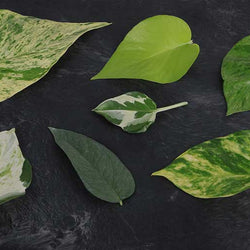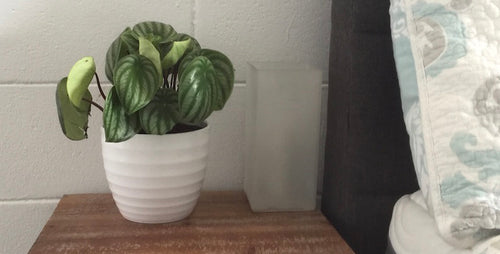 If you like variety and you like easy-care houseplants, you can’t go wrong with hoyas. These reliable plants come in a wide range of leaf shapes and colors and thrive with a minimum of care. That’s partly because they have thick, waxy leaves that hold water, keeping the plant hydrated even when you leave for a few days.
If you like variety and you like easy-care houseplants, you can’t go wrong with hoyas. These reliable plants come in a wide range of leaf shapes and colors and thrive with a minimum of care. That’s partly because they have thick, waxy leaves that hold water, keeping the plant hydrated even when you leave for a few days.
Such diversity!
Hoyas have a trailing habit that makes them ideal candidates for hanging baskets, urns, or tall planters. Some hoya varieties sport deep, dark green foliage, while others are heavily variegated with gorgeous yellow or white blotches. There’s even a hoya with large, heart-shaped leaves. As an added bonus, when your plants mature they may produce fragrant star-like clusters of white, waxy blooms.
They love bright, indirect light
Although hoyas are tolerant of a wide range of light conditions, they do best where they can enjoy bright, indirect light. Direct sun can be harmful so protect your plants with a sheer curtain if a sunny window is your only option. The more light they get the more likely they’ll produce flowers as they grow older.
Don't overwater!
Water your hoyas whenever the soil feels dry to the touch. They are tough enough to tolerate dry conditions, but will sulk if you overdo the watering. For most situations, a once-a-week drink is ideal, but always remember to check that the soil is dry before adding water.
Do you want flowers?
Hoyas don’t need a lot of fertilizer, but it will help the plant produce flowers. Use a liquid houseplant fertilizer and follow the label directions. A once or twice--a-month feeding during the spring and summer is fine. There’s no need to feed in the fall and winter.
Root hoya cuttings
Over time, some hoya varieties can grow rather long and lanky. Feel free to prune the plants back by about a third and, if you like, you can root the cuttings in a glass of water.
Watch for pests
And, finally, check your plants for insect pests every time you water. Sucking insects such as aphids, mealy bugs, and spider mites may attack, especially during the winter, so early intervention will keep your plants happy and healthy.
Read more about keeping your hoya happy!
Written by Doug Jimerson
















